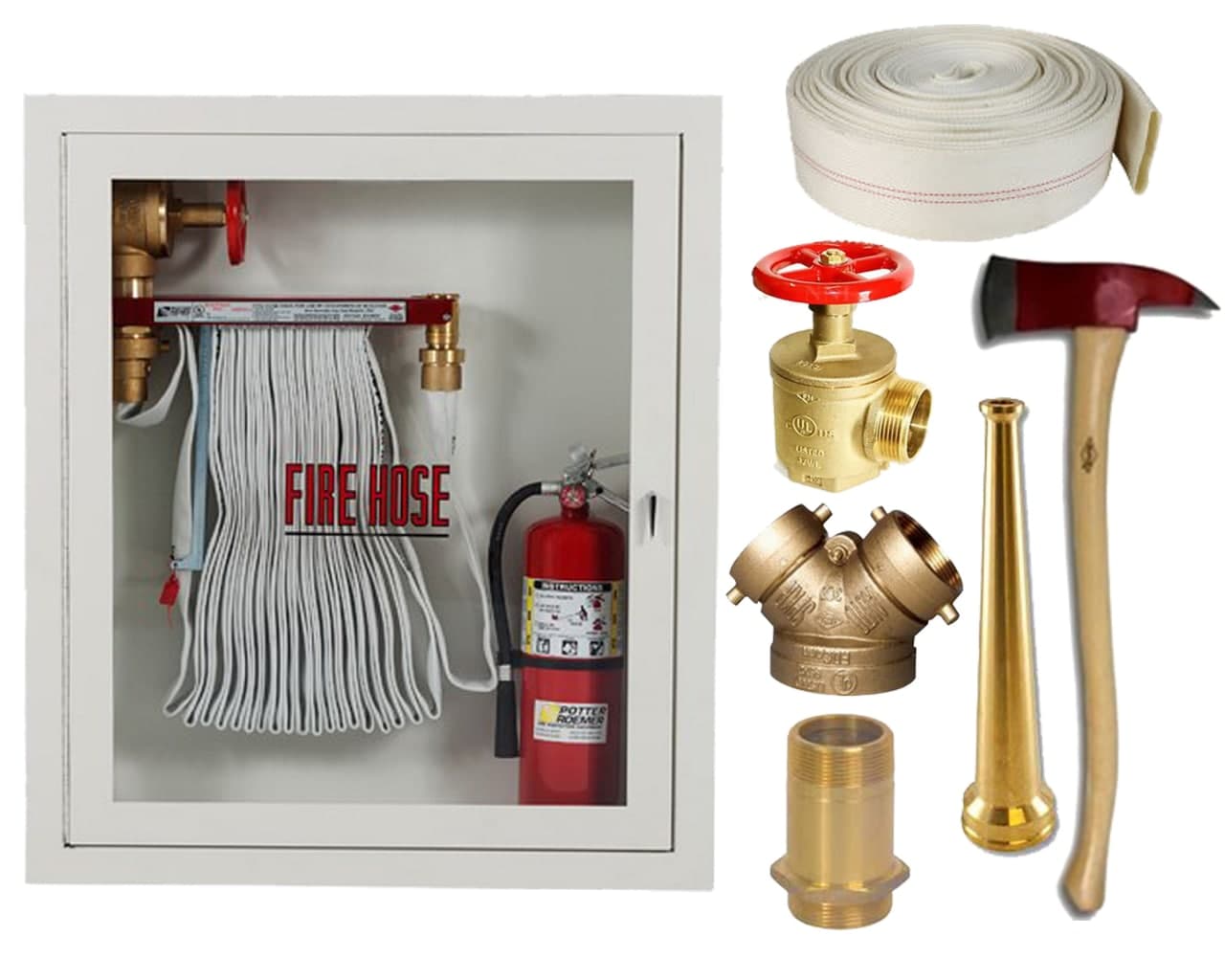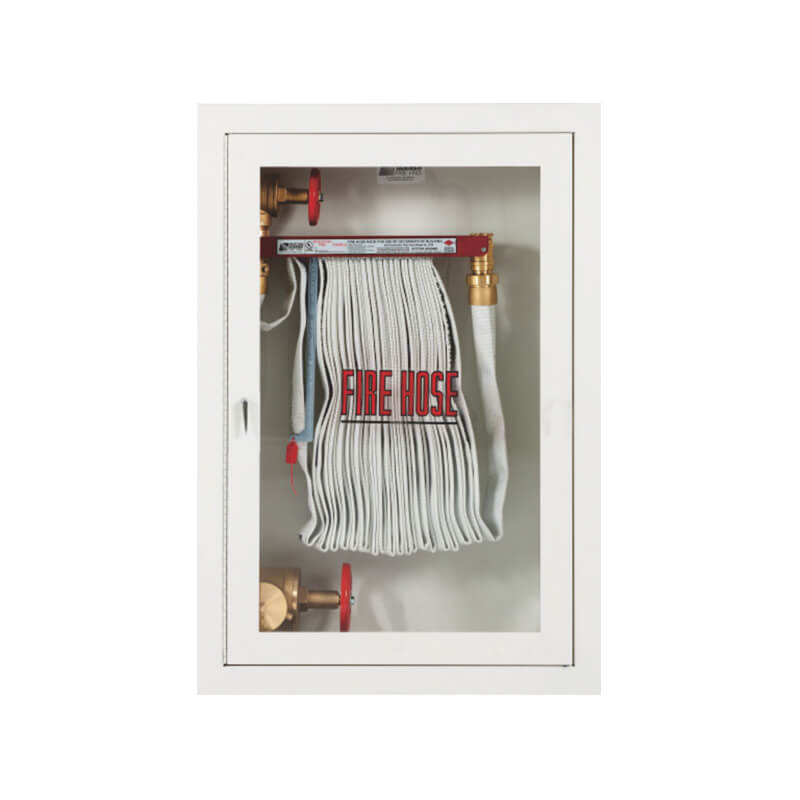Understanding Outdoor Fire Hose Cabinets

Outdoor fire hose cabinets are essential safety equipment designed to provide quick and easy access to fire hoses in case of emergencies. These cabinets serve as secure and weather-resistant enclosures, protecting the hoses from damage and ensuring their readiness for immediate use.
Types of Fire Hose Cabinets
The type of fire hose cabinet required will depend on the specific application and location.
- Wall-mounted cabinets are commonly used in commercial and industrial settings, offering a space-saving solution for mounting on walls or pillars. These cabinets are ideal for areas with limited floor space.
- Freestanding cabinets provide greater flexibility in placement, allowing them to be positioned independently in various locations. They are suitable for larger areas or where wall mounting is not feasible.
- Combination units offer a combination of wall-mounted and freestanding features, allowing for greater versatility in installation and placement. These units can be mounted on walls or stand independently, depending on the specific needs of the location.
Cabinet Materials
The material used for fire hose cabinets plays a crucial role in their durability, weather resistance, and overall performance.
- Steel cabinets are known for their strength and durability, making them suitable for harsh environments and high-traffic areas. They offer excellent resistance to impact and corrosion, ensuring long-term reliability.
- Aluminum cabinets offer a lightweight and corrosion-resistant option, making them ideal for areas where weight is a concern. Aluminum is also known for its excellent heat dissipation properties, reducing the risk of overheating.
- Fiberglass cabinets provide a cost-effective and durable alternative to steel and aluminum. They offer excellent resistance to corrosion and chemicals, making them suitable for a wide range of applications.
Placement and Accessibility
Proper placement and accessibility of fire hose cabinets are crucial for ensuring their effectiveness in emergencies.
- Cabinets should be located in easily accessible locations, ensuring that firefighters can quickly and easily access the hoses in case of an emergency.
- The placement should consider the potential fire hazards in the area, ensuring that the hoses can reach the most vulnerable points.
- Clear signage and markings should be used to identify the location of the fire hose cabinets, making them readily visible to firefighters and other personnel.
Components and Features of Fire Hose Cabinets

Fire hose cabinets are essential safety equipment that play a crucial role in containing fires in their early stages. These cabinets are designed to house fire hoses, nozzles, and other essential components, ensuring they are readily available in case of an emergency. Understanding the components and features of these cabinets is crucial for their effective operation and proper maintenance.
Essential Components
The essential components of a fire hose cabinet include the fire hose, nozzle, valve, and storage compartment. Each component plays a vital role in the functionality and effectiveness of the cabinet.
- Fire Hose: The fire hose is the primary component, transporting water from the source to the fire. It is typically made of durable materials such as rubber or synthetic fibers, designed to withstand high pressure and heat.
- Nozzle: The nozzle is attached to the end of the fire hose and controls the flow and direction of water. It is designed to provide different spray patterns, allowing firefighters to direct water effectively towards the fire.
- Valve: The valve is responsible for controlling the flow of water from the source to the fire hose. It is typically a gate valve or a ball valve, providing a quick and reliable way to shut off the water supply when needed.
- Storage Compartment: The storage compartment is where the fire hose, nozzle, and other components are housed. It is designed to protect these components from the elements and ensure they are readily accessible in case of an emergency.
Features Enhancing Usability and Safety
Fire hose cabinets are designed with various features to enhance their usability and safety. These features ensure the cabinet can be easily accessed and operated effectively during an emergency.
- Quick-Release Mechanisms: Quick-release mechanisms allow for rapid access to the fire hose. These mechanisms are typically located on the cabinet door or the hose itself, enabling firefighters to quickly deploy the hose and start fighting the fire.
- Hose Reels: Hose reels are used to store and deploy the fire hose efficiently. They are typically mounted on the cabinet door or inside the compartment, allowing for easy winding and unwinding of the hose.
- Pressure Gauges: Pressure gauges are essential for monitoring the water pressure in the fire hose system. They indicate the pressure available for firefighting, ensuring adequate water flow to effectively combat the fire.
Optional Accessories
Fire hose cabinets can be equipped with optional accessories that enhance their functionality and safety. These accessories provide additional features and support for firefighting operations.
- Hose Hangers: Hose hangers provide a dedicated place to store the fire hose when not in use. They help maintain the hose’s condition and ensure it is easily accessible.
- Fire Extinguishers: Fire extinguishers are a valuable addition to fire hose cabinets, providing an immediate means of fire suppression before the fire hose is deployed. They are especially useful for small fires that can be quickly extinguished.
- Signage: Clear and visible signage is essential for identifying the location of the fire hose cabinet. Signage should indicate the type of fire extinguisher, instructions for use, and emergency contact information.
Components and Features of a Typical Fire Hose Cabinet
| Component | Feature | Description |
|---|---|---|
| Fire Hose | Durable, High-Pressure Resistant | Transports water from the source to the fire. |
| Nozzle | Adjustable Spray Patterns | Controls the flow and direction of water. |
| Valve | Quick-Release Mechanism | Controls the flow of water from the source to the hose. |
| Storage Compartment | Weatherproof, Secure | Houses the fire hose and other components. |
| Hose Reel | Easy Winding and Unwinding | Stores and deploys the fire hose efficiently. |
| Pressure Gauge | Monitors Water Pressure | Indicates the pressure available for firefighting. |
| Hose Hangers | Dedicated Storage | Provides a place to store the hose when not in use. |
| Fire Extinguishers | Immediate Fire Suppression | Provides a quick means of fire suppression. |
| Signage | Clear and Visible | Identifies the location and provides instructions. |
Installation and Maintenance of Fire Hose Cabinets: Outdoor Fire Hose Cabinet

Installing and maintaining an outdoor fire hose cabinet is crucial for ensuring its effectiveness in emergency situations. Proper installation guarantees easy accessibility and reliable water flow, while regular maintenance ensures optimal performance and longevity.
Location and Mounting
The location of a fire hose cabinet is paramount to its functionality. It should be readily accessible in case of a fire and situated in a location that minimizes the risk of damage or obstruction.
- Accessibility: Choose a location easily accessible from the potential fire hazard area, with clear pathways and unobstructed views.
- Protection from the elements: Ensure the cabinet is shielded from direct sunlight, rain, and extreme weather conditions. A covered area or a dedicated enclosure can help protect the cabinet and its components.
- Mounting: The cabinet should be securely mounted to a sturdy surface, such as a wall or a dedicated stand, to prevent it from being dislodged during use or in high-wind conditions. Ensure the mounting method is appropriate for the cabinet’s weight and the building’s structure.
Connecting to Water Sources
The fire hose cabinet needs to be connected to a reliable water source to ensure an adequate water supply in case of a fire.
- Water Source: The water source should be a dedicated fire hydrant or a reliable water supply system with sufficient flow rate and pressure.
- Pipe Sizing: The pipes connecting the cabinet to the water source should be appropriately sized to ensure adequate water flow. Consult with a qualified plumber or fire safety professional for the appropriate pipe size based on the specific water source and the cabinet’s requirements.
- Valves: Install shut-off valves near the water source and at the cabinet to control water flow and isolate the system for maintenance. These valves should be easily accessible and properly labeled.
Maintenance Checklist, Outdoor fire hose cabinet
Regular maintenance is crucial for keeping the fire hose cabinet in optimal working order.
- Visual Inspections: Conduct regular visual inspections of the cabinet, hose, nozzle, and valves to check for any signs of damage, wear, or corrosion.
- Hose Testing: Periodically test the fire hose by deploying it and checking for leaks, kinks, or damage. A water pressure test should be conducted to ensure the hose can withstand the required pressure.
- Valve Lubrication: Lubricate the valves regularly with a suitable lubricant to prevent them from seizing or sticking. This ensures smooth operation and prevents leaks.
- Cleaning: Clean the cabinet and its components regularly to remove dirt, debris, and corrosion. A mild detergent and water can be used for cleaning. Avoid using harsh chemicals that could damage the cabinet or its components.
- Documentation: Maintain detailed records of all inspections, tests, and maintenance activities. This documentation is crucial for tracking the cabinet’s condition and identifying any potential issues.
Preventing Damage
Taking precautions to prevent damage to the fire hose cabinet can ensure its longevity and effectiveness.
- Protection from the Elements: Ensure the cabinet is protected from direct sunlight, rain, and extreme weather conditions. A covered area or a dedicated enclosure can help protect the cabinet and its components.
- Avoid Obstructions: Keep the area around the cabinet clear of obstructions to ensure easy access and prevent accidental damage.
- Regular Inspections: Regularly inspect the cabinet and its components for any signs of damage, wear, or corrosion. Early detection and repair can prevent more serious issues.
Using a Fire Hose Cabinet in an Emergency
Knowing how to use a fire hose cabinet in an emergency is essential for a quick and effective response.
- Locate the Cabinet: Quickly locate the fire hose cabinet. It should be clearly marked and easily accessible.
- Open the Cabinet: Open the cabinet door or lid and locate the fire hose and nozzle.
- Connect to the Water Source: Open the shut-off valve at the water source to allow water to flow to the cabinet.
- Deploy the Hose: Unroll the fire hose and connect the nozzle.
- Direct the Water: Direct the water stream towards the fire. Use a sweeping motion to cover the fire area.
- Stay Safe: Always stay upwind of the fire and wear appropriate protective gear, such as gloves and a fire-resistant suit.
- Call for Help: Immediately call the fire department and report the fire. Provide your location and any relevant information, such as the type of fire and any potential hazards.
Outdoor fire hose cabinets are essential for fire safety, providing quick access to firefighting equipment. These cabinets often require regular maintenance, including repainting. If you need to remove old paint from a wood fire hose cabinet, you can refer to this guide on how to remove paint from wood cabinets.
Once the cabinet is prepped, a fresh coat of paint will ensure visibility and protect the wood from the elements, contributing to a safe and functional fire safety system.
Outdoor fire hose cabinets are essential safety features for homes and businesses, providing quick access to water in case of a fire. While these cabinets are typically made of sturdy metal, the shelves within can be constructed using various materials, including wood.
Similar to the kitchen cabinet shelves wood , these shelves should be resistant to moisture and heat, ensuring durability and longevity in the harsh outdoor environment. The use of fire-retardant coatings can further enhance safety in the event of a fire, providing an extra layer of protection within the outdoor fire hose cabinet.
